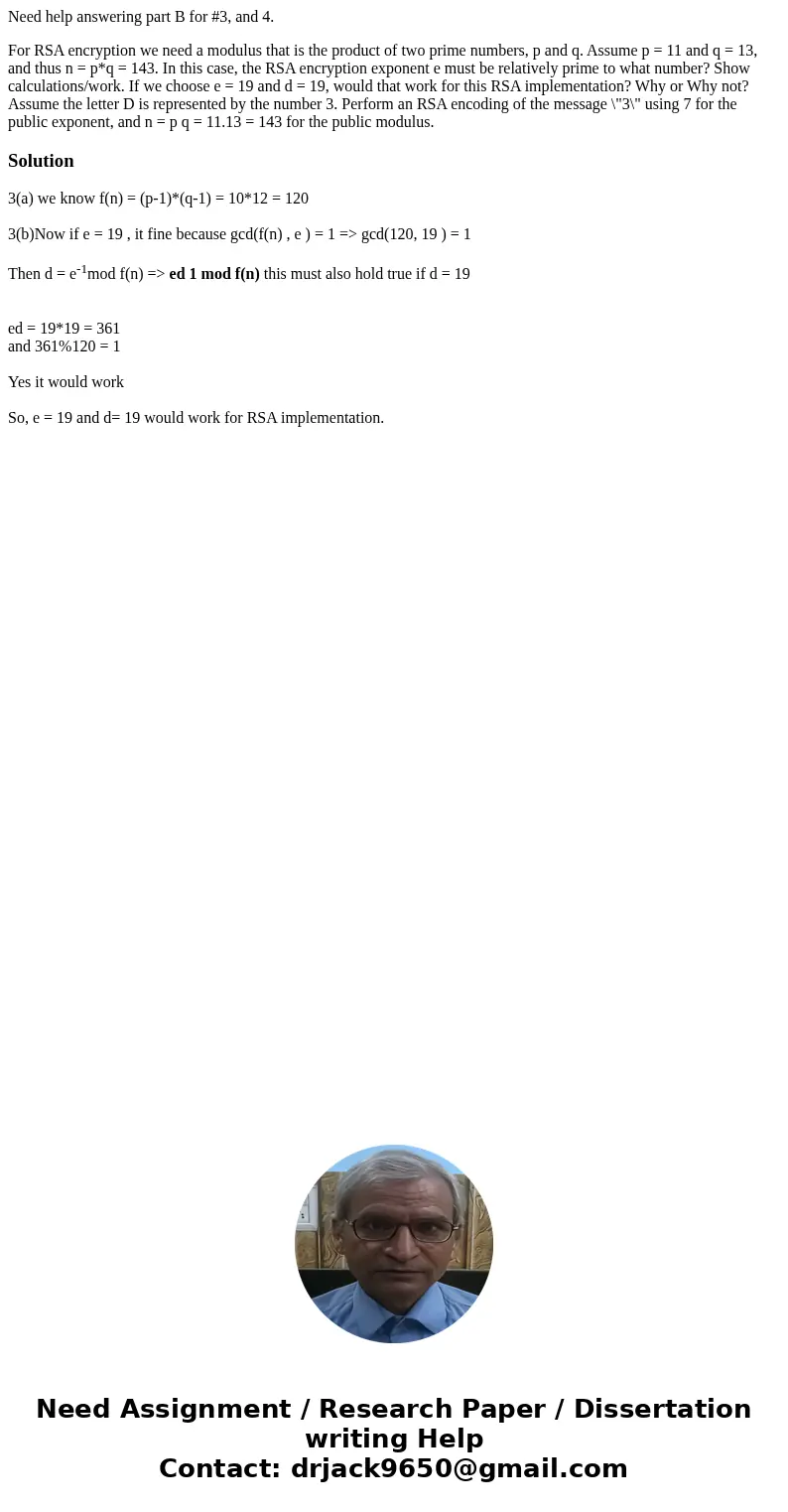Need help answering part B for 3 and 4 For RSA encryption we
Need help answering part B for #3, and 4.
For RSA encryption we need a modulus that is the product of two prime numbers, p and q. Assume p = 11 and q = 13, and thus n = p*q = 143. In this case, the RSA encryption exponent e must be relatively prime to what number? Show calculations/work. If we choose e = 19 and d = 19, would that work for this RSA implementation? Why or Why not? Assume the letter D is represented by the number 3. Perform an RSA encoding of the message \"3\" using 7 for the public exponent, and n = p q = 11.13 = 143 for the public modulus.Solution
3(a) we know f(n) = (p-1)*(q-1) = 10*12 = 120
3(b)Now if e = 19 , it fine because gcd(f(n) , e ) = 1 => gcd(120, 19 ) = 1
Then d = e-1mod f(n) => ed 1 mod f(n) this must also hold true if d = 19
ed = 19*19 = 361
and 361%120 = 1
Yes it would work
So, e = 19 and d= 19 would work for RSA implementation.

 Homework Sourse
Homework Sourse